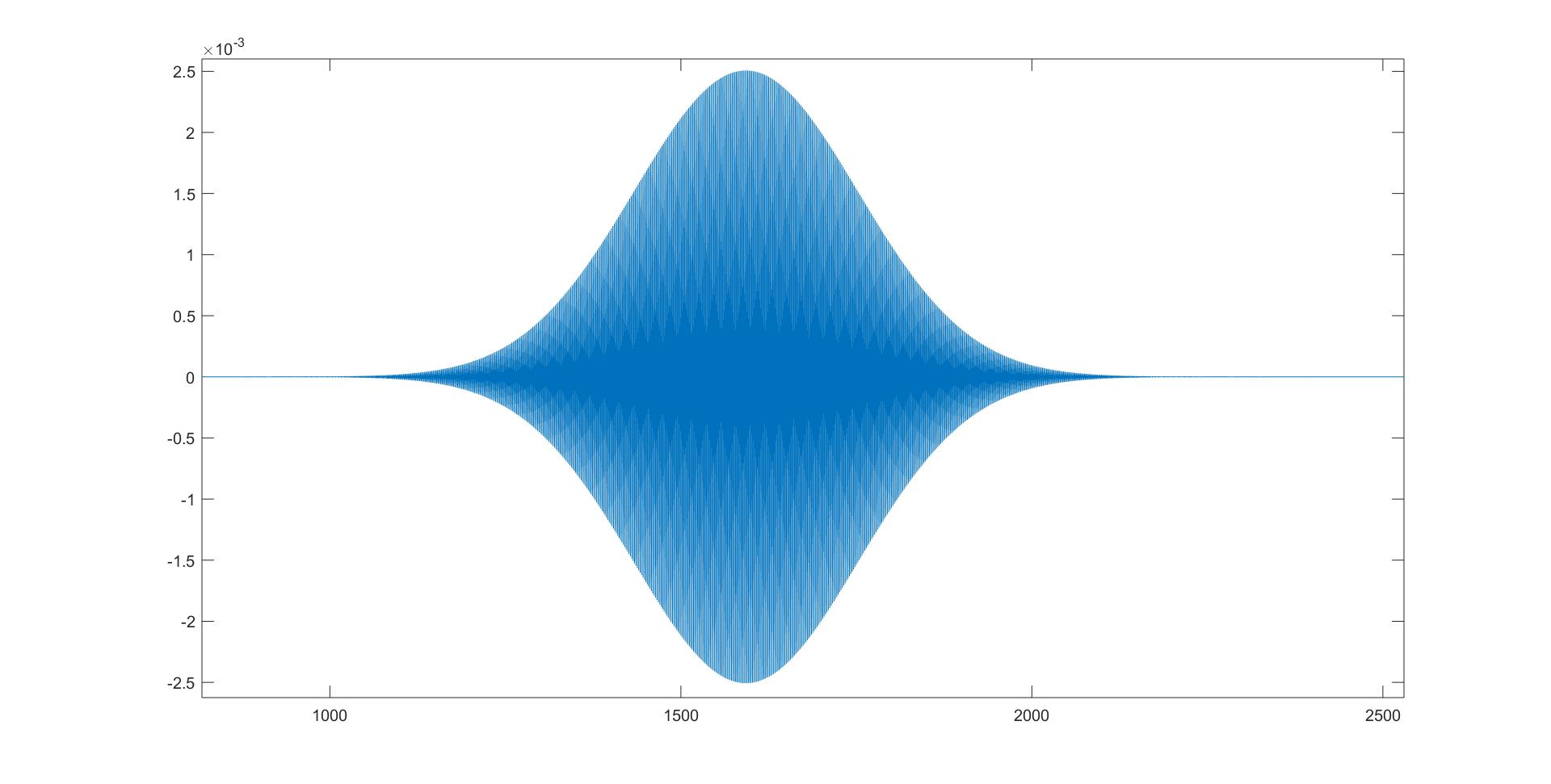I have an oscillating pulse in the frequency domain that I would like to inverse Fourier transform. My signal looks like:

Which was coded in MATLAB using the following code:
sampleRate = 1000;
freq = 500 : (1/sampleRate) : 1500;
intensityFreq = exp(-((freq-1000).^2));
signalFreq = sqrt(intensityFreq).*exp(-1i*10*(freq-1000));
plot(freq,signalFreq)
When I inverse Fourier transform, it shows a similar oscillating pulse (in time) whose oscillations depends on the frequency range I used in the above code. For example, when:
freq = 500 : (1/sampleRate) : 1500;
is used (as in the code shown above), the inverse fourier transform looks like:

But when:
freq = 980 : (1/sampleRate) : 1020;
Is used instead, the inverse Fourier transform looks like:

This makes no sense to me, since the frequency range shouldn't matter since signalFreq goes to 0 around these points anyway. Why does the altered frequency range affect the oscillations in the inverse Fourier transform so much? How do I obtain the "actual" time domain signal that doesn't depend on frequency windows?
Any help is much appreciated. If this post is not clear I would be happy to provide more detail.
EDIT: The full code used to find the inverse Fourier transform is:
sampleRate = 1000;
freq = 500 : (1/sampleRate) : 1500;
intensityFreq = exp(-((freq-1000).^2));
signalFreq = sqrt(intensityFreq).*exp(-1i*10*(freq-1000));
Y = ifft(signalFreq);
plot(real(Y))
